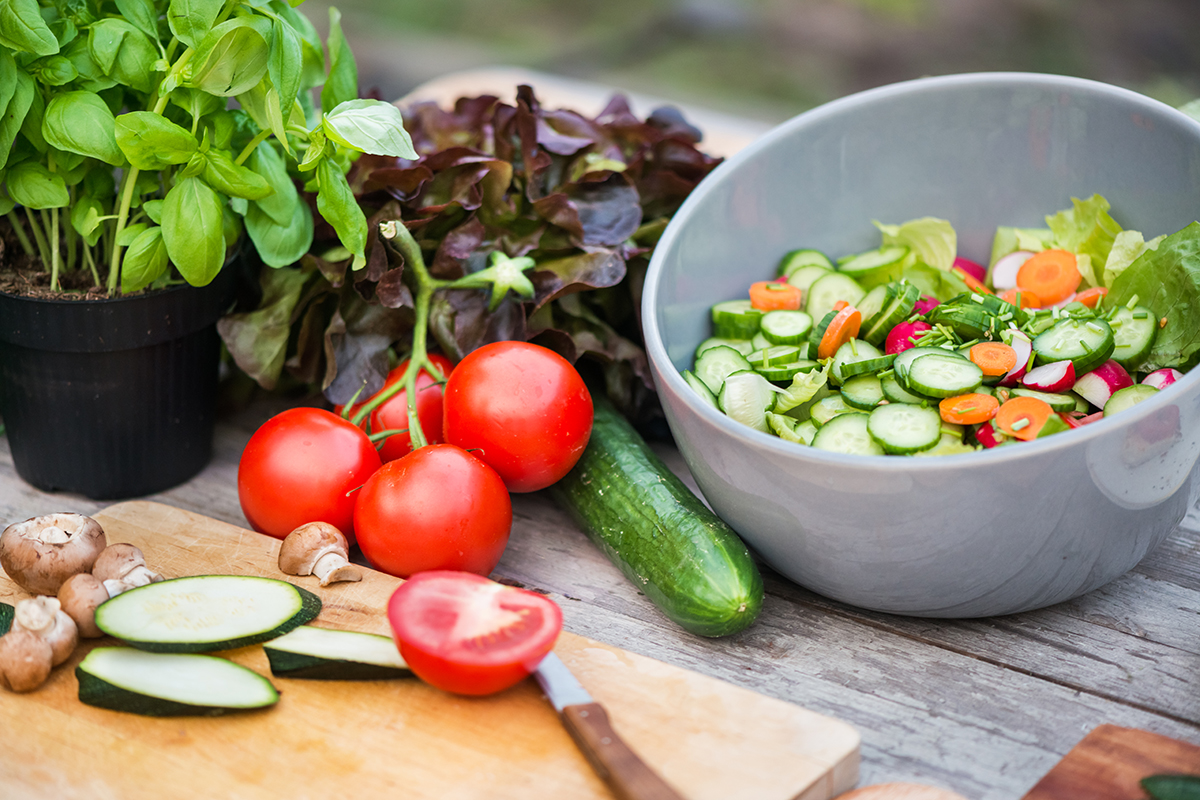How a Philly School Is Helping Their Whole Community Get Access to Fresh Food

Getting people to eat healthier is one of the solutions to heart disease that’s the most simply stated, but also one that’s possibly the most difficult to enact. How do you help entire populations of individuals to change something as fundamental to their lifestyles as their eating habits?
The first step might be giving them access to those healthy foods in the first place. Low-income areas can frequently lack grocery stores, relying instead on smaller businesses, such as corner stores, as their primary food source. These businesses often focus on processed food over the perishable-but-healthier fresh produce that drives heart health. If communities had a reliable alternative, you might see healthy eating increase, and as a result, better overall cardiovascular health. It would just require a place that’s central and accessible to the community, comparable to a grocery store.
What’s more central to a community than its school? That thesis is being tested by Philadelphia’s community school program, funded in part by the city’s sweetened beverage tax and capacity building grants from the American Heart Association.
“Those capacity building grants have really been so important to be able to keep more produce and perishable items at the school,” says Laura Crandall, director of food security initiatives with the City of Philadelphia’s Office of Children and Families.
At Murrell Dobbins Career and Technical Education High School in particular, the school has become a source of fresh food for students, their parents, and even the community at large.
“This was a food desert. Unfortunately, there wasn’t a lot of access in this community to fresh fruits and vegetables,” says Sowshan Moore, community schools coordinator at Dobbins.
An idea that sprouted during the pandemic, the program works in two major aspects. First, the school hosts fresh-food giveaways every Wednesday–almost like an open-air market, with tables set up to present the food. The entire community is invited, not just families, and the food is provided by local nonprofit Philabundance, which collects food at risk of going to waste from local businesses. Students at the school, which features a strong cooking program, prepare meals for the event as well (Moore notes that the split pea soup is a consistent favorite).
What makes the program particularly innovative, however, is the way it makes the most of the delivery from Philabundance. It takes food that is not given away on Wednesday and stores it in a large refrigerator, set up separately from the school’s lunch room. The school received funding for the fridge thanks to the support of several grants, including one from the American Heart Association.
Students have the ability to access the fridge at all hours of the day. They just need to sign in, and they can not only take food for themselves, but for their families if needed.
The program becomes holistic because when the student signs up for access, they’re also offered services to help with food insecurity in the home, such as SNAP benefits. The aim of the program is to not only combat food insecurity, but increase school attendance by overcoming the barrier of food insecurity, and ultimately support the entire community.
“The food distribution allows so many other people in the community to then be able to access food and fresh fruits and fresh vegetables that they weren’t able to get before,“ Moore says.
This is a paid partnership between Go Red For Women and Philadelphia Magazine